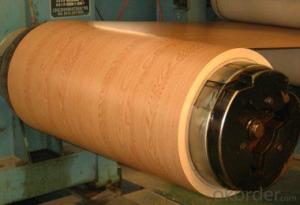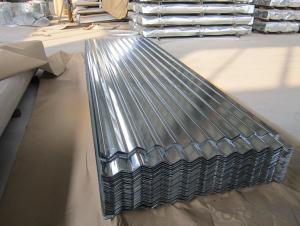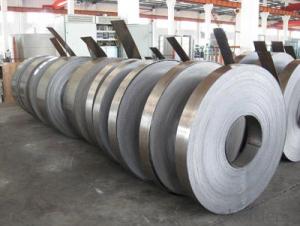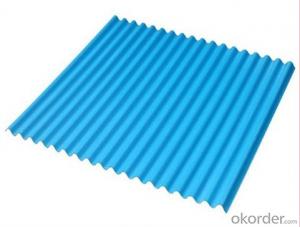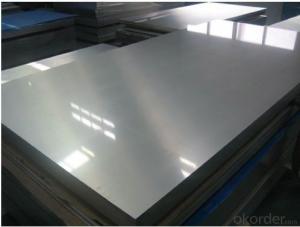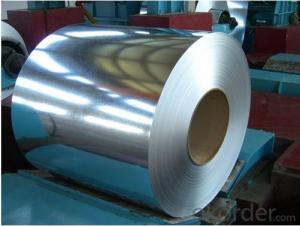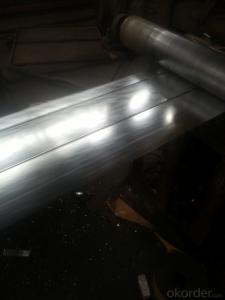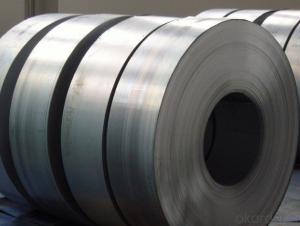Marble pattern PPGI PPGL Color coated steel coils
- Loading Port:
- Shanghai
- Payment Terms:
- TT OR LC
- Min Order Qty:
- 50 m.t.
- Supply Capability:
- 100000 m.t./month
OKorder Service Pledge
OKorder Financial Service
You Might Also Like
colour coated steel
painting colour steel , zinc coated steel , lead coated steel
Standard: | AISI,ASTM,BS,DIN,GB,JIS | Grade: | DX51D,SGCC,SPCC,CGCC | Thickness: | 0.17-1.5mm |
Place of Origin: | Taian China (Mainland) | Brand Name: | HengJi | Model Number: | HJ |
Type: | Steel Coil | Technique: | Cold Rolled | Surface Treatment: | RAL color cremated, oiled, skin passed |
Application: |
building metal roofing components,house appliance | Width: | 914-1250mm | Length: | customized |
price: | favorable price | Our Customers | Steel force, Stemcor, Duferco, Samsung , G&G,Hyosung,CNBM |
Packaging & Delivery
Packaging Detail: | standard export packing or customized |
Delivery Detail: | 15 days after prepayment |
Specifications:
galvanized steel coil:
1.Thickness:0.17mm-1.5mm
2.Zinc coated:40g-275g/2
3.Standard:dx51d+z,sgcc
We manufacture Galvanized Steel Coils,Pre-painted Galvanized Steel Coils , etc
Prepainted steel coil features:
1. Zinc coating :40-120g(as reauired)
2. thickness:0.17-1.2mm
3. width:914-1250mm(900mm,1215mm,1250mm,1000mm the most common)
4. coil id:508m610mm
5. coil weight: 3-12(as required)
6. surface treatment:RAL color
Galvanized steel coil features:
1. Zinc coating :40-275g( as required)
2. thickness:0.17-1.2mm
3. width:914-1250mm(900mm,1215mm,1250mm,1000mm the most common)
4. coil id:508m610mm
5. coil weight: 3-12(as required)
6. surface treatment: cremated, oiled, skin passed
7. Spangle: regular,small, zero
8.Application: With excellent cold bending molded manufacturablity, good decoration effect, strong anti-corrosion ability, galvanized steel coils and sheets are also pollution-free and easily recycled. Accordingly, they can be used as final products and basic plates of color coated steel coils and widely applied in construction, home appliances, decoration, ect.
Product name | steel coil,galvanized steel,galvanized steel coil |
Material | DX51D, SGCC, SPCC, CGCC, DX51D |
Normal thickness | 0.17-1.2mm |
Normal width | 900mm,914mm, 1000mm, 1200mm, 1220mm, 1250mm |
Coil weight | 3-12ns |
Certificate | BV & SGS |
Original | Shandong,China |
Payment terms | L/C or T/T |
Delivery time | within 15 ~ 25 days after 30% prepayment |
- Q:How are steel strips used in the production of metal signs?
- Steel strips are commonly used in the production of metal signs as they offer several advantages. Firstly, steel strips provide a strong and durable base for the sign, ensuring its longevity and resistance to weather elements. This is important, especially for outdoor signs that are exposed to rain, wind, and sunlight. Additionally, steel strips can be easily shaped and bent into various forms, allowing for the creation of different sign designs. This flexibility makes steel strips a versatile material for sign manufacturers, enabling them to create intricate and custom-made signs. Moreover, steel strips can be coated with different finishes, such as paints, coatings, or laminates, to enhance their appearance and protect them from corrosion. This helps to maintain the aesthetic appeal of the sign and prolong its lifespan. Furthermore, steel strips are often used as a substrate for applying graphics, lettering, or other decorative elements on the sign. They provide a smooth and flat surface, allowing for precise and high-quality printing or application of vinyl decals. Lastly, steel strips can also be easily attached to various mounting systems, such as brackets, frames, or posts, making it convenient to install the metal signs in different locations. In summary, steel strips are an essential component in the production of metal signs due to their strength, versatility, ability to be coated, substrate properties, and ease of attachment. These qualities make steel strips an ideal choice for manufacturing metal signs that are durable, visually appealing, and suitable for various applications.
- Q:How do steel strips compare in terms of cost?
- Steel strips can vary in cost depending on factors such as the grade, thickness, and width of the strip. Generally, steel strips are competitively priced compared to other materials with similar qualities, making them a cost-effective option for various applications. However, the exact cost comparison can vary depending on specific requirements and market conditions.
- Q:What are the standard lengths of steel strips?
- Depending on the industry and application, the standard lengths of steel strips can differ. Generally, steel strips are readily accessible in lengths of either 20 feet or 6 meters. These lengths are appropriate for a range of purposes, including manufacturing, construction, and fabrication. Furthermore, by employing the proper tools and equipment, custom lengths can be achieved by cutting the steel strips to the desired size. It is recommended to consult the supplier or manufacturer to determine the specific length requirements based on the intended use.
- Q:Can steel strips be used in the medical industry?
- Yes, steel strips can be used in the medical industry. Steel strips are versatile and can be used for various applications in the medical field. They are commonly used for manufacturing surgical instruments, medical implants, and medical equipment. Due to their strength, durability, and corrosion resistance, steel strips are ideal for applications where high precision and reliability are required. They can be easily shaped and formed into different medical devices, ensuring that they meet the specific needs of patients and healthcare professionals. Steel strips can also be surface treated to enhance their biocompatibility, making them suitable for implantable medical devices. The surface treatment can provide additional benefits such as reducing the risk of infections and promoting better integration with the patient's body. Moreover, steel strips offer excellent mechanical properties, allowing for precise machining and fabrication. They can be easily sterilized and cleaned, making them suitable for use in sterile environments. It is important to note that stainless steel is commonly used in the medical industry due to its resistance to corrosion and ability to withstand harsh sterilization processes. However, other types of steel can also be used depending on the specific requirements of the medical application. In conclusion, steel strips can be utilized in the medical industry for a wide range of applications. Their strength, durability, corrosion resistance, and ability to be surface treated make them a reliable choice for manufacturing surgical instruments, medical implants, and other medical equipment.
- Q:How are steel strips tested for oil or grease residues?
- Steel strips are typically tested for oil or grease residues through a process called the solvent extraction method. In this method, the steel strips are soaked in a solvent that dissolves and removes any oil or grease present on the surface. The solvent is then collected and analyzed for the presence of oil or grease residues using various techniques such as gravimetric analysis or infrared spectroscopy.
- Q:What is the impact resistance of a steel strip?
- The impact resistance of a steel strip refers to its ability to withstand and absorb the force of an impact without breaking, cracking, or deforming.
- Q:What are the weight considerations when using steel strips?
- When using steel strips, weight considerations involve understanding the weight of the steel strips themselves as well as the impact they will have on the overall weight of the structure or product they are being used in. This includes considering the weight-bearing capacity of the steel strips, ensuring they are strong enough to support the intended load without causing failure or deformation. It is also crucial to assess the transportation and handling requirements, as the weight of the steel strips can affect logistical aspects such as shipping costs and equipment requirements. Additionally, weight considerations may vary depending on the application, as certain industries or projects may have specific weight limits or regulations that need to be adhered to.
- Q:How are steel strips protected during storage?
- Steel strips are typically protected during storage through various methods such as applying a protective coating, using moisture-absorbing materials like desiccants, and storing them in a controlled environment to prevent corrosion and damage.
- Q:How do steel strips respond to different machining processes?
- Steel strips respond differently to different machining processes depending on factors such as the type of steel, the desired outcome, and the specific machining process used. When it comes to cutting processes such as shearing or sawing, steel strips tend to respond well due to their high strength and hardness. However, the choice of cutting tool and cutting parameters is crucial to ensure a clean cut and prevent excessive tool wear. For drilling or milling operations, steel strips may require more attention due to their toughness and tendency to work harden. Proper cutting tools with appropriate geometries and coatings are necessary to effectively remove material and avoid excessive heat build-up. Turning or lathing operations on steel strips can be challenging, especially for harder grades. The cutting tools need to be carefully selected to withstand the high forces involved and provide optimal chip control and surface finish. Grinding is another common machining process used on steel strips, particularly for achieving precise dimensions and surface finish. This process can effectively remove material and improve the strip's dimensional accuracy, but it requires specific grinding wheels and coolant systems to control heat generation and maintain dimensional stability. Overall, steel strips are versatile and can be machined using various processes. However, it is essential to consider the specific characteristics of the steel, the desired outcome, and the capabilities of the machining equipment to ensure successful and efficient machining operations.
- Q:Can steel strips be used in medical applications?
- Yes, steel strips can be used in certain medical applications. They are commonly used in the manufacturing of medical instruments, surgical tools, and implants due to their durability, corrosion resistance, and ability to be sterilized easily. However, the specific use of steel strips in medical applications may vary depending on the intended purpose and requirements of the medical device or equipment.
1. Manufacturer Overview |
|
|---|---|
| Location | |
| Year Established | |
| Annual Output Value | |
| Main Markets | |
| Company Certifications | |
2. Manufacturer Certificates |
|
|---|---|
| a) Certification Name | |
| Range | |
| Reference | |
| Validity Period | |
3. Manufacturer Capability |
|
|---|---|
| a)Trade Capacity | |
| Nearest Port | |
| Export Percentage | |
| No.of Employees in Trade Department | |
| Language Spoken: | |
| b)Factory Information | |
| Factory Size: | |
| No. of Production Lines | |
| Contract Manufacturing | |
| Product Price Range | |
Send your message to us
Marble pattern PPGI PPGL Color coated steel coils
- Loading Port:
- Shanghai
- Payment Terms:
- TT OR LC
- Min Order Qty:
- 50 m.t.
- Supply Capability:
- 100000 m.t./month
OKorder Service Pledge
OKorder Financial Service
Similar products
New products
Hot products
Hot Searches
Related keywords
